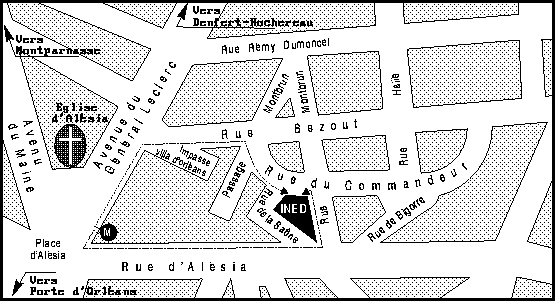 Institut
national d'études démographiques
Institut
national d'études démographiques Séminaire
"Démodynamiques"
Modelling mortality by regression
methods
Christopher R. Heathcote(*)
Jeudi 11 janvier 1996 de 14 à 15 h (salle du 3e étage)
(*)
Professor of Statistics, Australian National University and invited researcher at INED
Summary
A mortality surface is a function on the
(time,age) Lexis plane that describes the mortality experience of a population
during a given interval of time. Examples are the logarithm of the force of
mortality as it varies with time and age, and the logistic transform of the
(time, age) specific probability of death. Autogressive models have been fitted
to these quantities by Mc Nown and Rogers (1989), Lee and Carter (1992), and
others, and a different aproach analysing the two-dimensional array into time,
age and also cohort effects has been developed by Wilmoth, Vallin and Caselli
(1989) and Wilmoth (1990). The purpose of the present talk is to show how
standard regression methods can be used to estimate a parametrised version of a
mortality surface. Appropriate regression models seen to be heteroscedastic,
involving extra binomial variation due to heterogeneity, with the variance
function also depending on the unknown parameters. This in turn leads to
fitting the mortality surface by iterated reweighted least squares. The method
is illustrated by fitting a Gompertz model to the mortality of French males
aged 50-105 for the years 1950-1989. Forecasts from the fitted surface indicate
a continuing substantial decline in mortality, particularly at older
ages.
Animateur de la séance Nicolas Brouard,
brouard@sauvy.ined.fr
On peut trouver le programme du séminaire sur http://sauvy.ined.fr/seminaires/demodynamiques
L'INED est situé au 27 de la rue du Commandeur à Paris dans le 14e
arrondissement, à 3 minutes du métro Alésia. Tél: 42 18 20 00.
Un texte est généralement disponible une semaine avant l'exposé au
secrétariat, tél 42 18 20 18.
